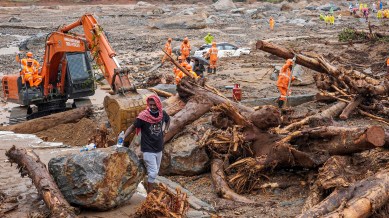The recent tragedy in Wayanad highlights a stark and disturbing divide in Indian society, underscoring the deep chasm between the affluent and the underprivileged. The incident, involving the tragic loss of lives due to inadequate safety measures and systemic failures, lays bare the glaring inequalities that persist across the nation.

Source:- news 18
Wayanad, a picturesque district in Kerala, is often perceived as a serene and affluent locale. However, beneath its scenic veneer lies a harsh reality that mirrors the broader socio-economic disparities in India. The tragedy, which resulted from a series of preventable lapses, has brought to light the systemic neglect faced by marginalized communities. These communities, often living on the fringes of society, are frequently deprived of essential services and protections that are more readily accessible to their wealthier counterparts.
Source:- BBC news
The incident has ignited a crucial conversation about the urgent need for equitable development and social justice. The disparity in access to resources, infrastructure, and basic safety measures between different socio-economic groups is not just a reflection of systemic failure but a manifestation of the larger societal inequities that need addressing. The Wayanad tragedy serves as a poignant reminder that while a segment of society enjoys privileges and comforts, a significant portion remains vulnerable and underserved.
To bridge this divide, a comprehensive and inclusive approach is required. This involves not only improving safety and infrastructure in underserved areas but also addressing the broader socio-economic factors that perpetuate inequality. Effective policy interventions, increased investment in social welfare, and a commitment to equitable development are essential steps towards creating a more just and balanced society. The Wayanad tragedy, thus, is a call to action to rectify the entrenched disparities and ensure that no segment of society is left behind.
Share your views in the comments

